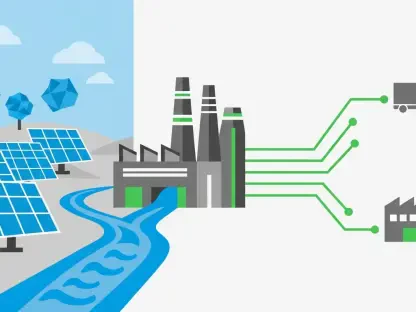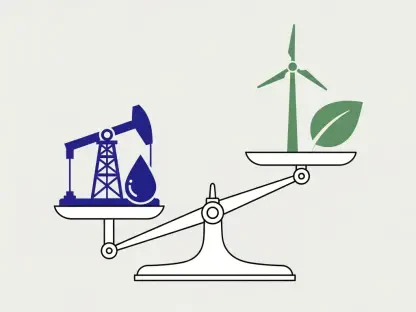The recent decision by the Federal Energy Regulatory Commission (FERC) has sent ripples through the energy and tech industries, particularly for those seeking to pioneer the integration of data centers powered by nuclear plants. On Friday, FERC’s 2–1 ruling rejected a proposal from Amazon and Talen Energy, which aimed to connect a massive data center expansion directly to the Susquehanna nuclear power plant in Pennsylvania. While this decision doesn’t completely terminate the Amazon-Talen project, it underscores significant regulatory challenges and impacts future plans for colocation of data centers and nuclear power.
The Amazon-Talen Energy Deal
A Promising Partnership
The Amazon-Talen Energy deal involved Amazon’s $650 million acquisition of a data center campus connected to Talen’s Susquehanna nuclear plant. This arrangement promised to fast-track Amazon’s access to nuclear power, bypassing the lengthy timeline associated with constructing new or restarting existing nuclear reactors. This approach is seen as critical for tech companies needing immediate access to substantial amounts of carbon-free energy. Amazon’s interest in nuclear power underscores the broader industry trend of tech giants seeking reliable and low-carbon energy sources to support the rapid expansion of cloud computing and AI data centers.
At a time when demand for energy continues to surge, nuclear power offers a stable and continuous supply of electricity, distinguishing it from intermittent renewable sources like wind and solar. However, the FERC ruling represents a significant speed bump in Amazon’s race toward greener data centers. The implications of the denial could resonate across the tech industry as other companies evaluate the benefits and risks of similar ventures. The regulatory landscape now appears more daunting, potentially slowing the momentum for nuclear-powered tech infrastructure.
Regulatory Roadblocks
Despite the promising potential of such deals, FERC’s denial of the amended interconnection service agreement (ISA) proposed by grid operator PJM Interconnection complicates these ambitions. The decision arose amidst concerns from utilities like Exelon and American Electric Power, who argued that expanding the Susquehanna data center could shift significant costs—up to $140 million annually—onto consumers within the PJM grid. States served by PJM, which range from the mid-Atlantic coast to the Great Lakes, could face increased utility bills and grid reliability issues due to these colocation projects.
The debate highlights the delicate balance between innovative energy strategies and consumer protection, a balance that regulatory bodies like FERC must maintain. The challenge lies in integrating substantial new power demands from data centers without placing undue financial strain on the existing customer base. Considering PJM’s extensive service area, the stakes are high, and the decision underscores the need for more nuanced solutions to incorporate nuclear energy into the grid. This ruling sends a clear message to the tech and energy sectors that future proposals must be meticulously planned and transparently vetted to align with regulatory expectations and consumer interests.
Broader Implications for the Industry
Impact on Other Tech Giants
Beyond the specific case of Amazon and Talen Energy, several other tech giants have been pursuing similar partnerships. Microsoft, for instance, struck a long-term power purchase agreement with Constellation Energy to support the reopening of the Three Mile Island Unit 1 reactor, while both Amazon and Google are backing small modular reactors (SMRs), a still-developing category of nuclear power. FERC’s ruling doesn’t directly impact these initiatives but raises questions about the viability and regulatory hurdles of connecting existing nuclear plants to new data center projects.
These partnerships signify a growing commitment in the tech industry to secure dependable and sustainable energy solutions. However, FERC’s recent decision emphasizes the complexity of integrating such innovations into the existing energy framework. As Microsoft, Google, and others navigate these regulatory waters, the tech industry must prepare for extensive scrutiny and potential opposition from various stakeholders. The broader implications stress the need for collaborative efforts among tech companies, energy providers, and regulators to devise models that ensure reliability, economic feasibility, and minimal disruption to consumers.
Economic and Regulatory Challenges
A broader consensus among industry watchers and analysts underlines that current and projected colocation deals might spark similar regulatory and economic challenges. Rob Rains, an analyst with Washington Analysis, stresses that although the immediate halt of data center deals isn’t expected, FERC’s decision sets a complicated precedent that stakeholders in both the tech and energy sectors must navigate. Consumer advocates, environmental groups, and utilities alike express concerns over potential shifts in costs and resources due to these colocation projects.
The scenario points to a future where negotiation and cooperation will be paramount in balancing high-energy demands with fair cost distribution across all customers. As tech firms continue to expand their digital infrastructures, sustainable solutions must account for the broader economic impacts and address potential objections from various interest groups. This balancing act between innovation and regulation will define the trajectory of future projects, dictating how seamlessly tech companies can integrate green energy into their operations without sacrificing financial and community support.
Grid Reliability and Cost Distribution
Concerns from Consumer Advocates
From FERC’s perspective, the focus remains on grid reliability and equitable distribution of costs. Pavel Molchanov of Raymond James & Associates points out that the regulatory objections would be applicable regardless of the type of power plant involved—be it nuclear, combined-cycle gas turbine, or renewable sources like wind or solar. The crux of the issue lies in ensuring that large electricity users, such as data centers, don’t unduly burden ordinary consumers by disproportionately drawing from the grid’s resources.
This fundamental concern reflects the core mission of regulatory bodies to protect consumers from sudden and unjustified increases in their utility bills. As tech giants continue to explore new energy sources, these companies must heed regulatory guidelines designed to maintain system balance and fairness. Any successful integration of large-scale data centers with nuclear energy will necessitate meticulous planning, rigorous compliance, and ongoing dialogue with regulators to prevent adverse impacts on the general population’s energy costs and access.
Potential Impact on Energy Market
Moreover, policymakers and stakeholders in the PJM region warn that colocation deals could exacerbate the gap between power supply and the ever-growing demand—a gap that is already pushing capacity prices upward. Given the intricacies and high stakes involved, FERC has mandated further study of PJM’s amended ISA to thoroughly evaluate the broader implications. Jackson Morris from the Natural Resources Defense Council warns that diverting nuclear power from the general grid to specific data centers could result in increased reliance on gas plants, leading to negative climate outcomes.
The energy market stands at a crossroads, with decisions today shaping the sustainability and reliability of tomorrow’s power supply. The exploration of nuclear-powered data centers presents a promising frontier, yet it must be approached with caution and foresight. The emphasis must remain on achieving a balanced blend of energy sources that collectively enhance grid stability and environmental benefits. As regulators like FERC scrutinize new proposals, the industry will need to innovate responsibly and collaboratively to realize the full potential of nuclear energy in tech operations without compromising market integrity or environmental goals.
Future Pathways and Considerations
Balancing Technological Advancements and Regulations
FERC’s decision represents a crucial juncture in the efforts to integrate nuclear power with data center operations. While it introduces significant regulatory complexities, it also calls for a more nuanced and thorough approach to future proposals. The ruling emphasizes the need for careful balancing of rapid technological advancements with traditional regulatory frameworks to ensure both market reliability and equitable cost distribution. As the tech and energy sectors evolve, effective communication and strategic planning will be key to overcoming the regulatory hurdles that currently challenge nuclear-powered data centers.
The anticipated surge in global data traffic necessitates robust and reliable energy solutions, with nuclear power standing out as a viable candidate. However, these ambitions must align with regulatory standards and public expectations to prevent disruptions. Future proposals will likely undergo stringent evaluations to ensure they uphold consumer protections, grid stability, and environmental benchmarks. Achieving this balance will require ongoing engagement among tech innovators, energy providers, regulators, and community stakeholders to foster trust and ensure sustainable progress.
Collaborative and Compliant Models
The recent ruling by the Federal Energy Regulatory Commission (FERC) has created significant waves in the energy and tech sectors, especially among those eager to forge ahead with integrating data centers powered by nuclear plants. Last Friday, FERC’s 2–1 decision shot down a proposal from Amazon and Talen Energy, which sought to directly link a large-scale data center expansion to the Susquehanna nuclear power plant in Pennsylvania. Although this ruling doesn’t entirely derail the Amazon-Talen project, it highlights substantial regulatory hurdles and poses questions about the future feasibility of co-locating data centers with nuclear power sources. This move is officially putting pressure on companies looking to innovate by placing data centers next to nuclear plants for their energy needs. The decision serves as a critical reminder of the complexities and stringent regulations governing such ambitious integrations, and it is set to impact future discussions and strategies around pairing nuclear energy with data centers, reflecting broader implications for both tech and energy sectors.









